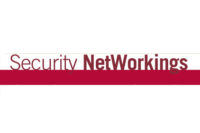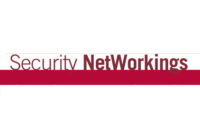The Ethernet communications language, or “protocol,†was initially developed to allow various computer devices to communicate with each other, and to provide for the use of common network equipment, such as printers, by a number of different network users. After development by a research facility, the ways and means of Ethernet were standardized by the IEEE (Institute of Electrical and Electronic Engineers) into a set of standards designated “802.3†(as the initial committee was established in the second month of 1980). Additional standards have been adopted over time to codify improvements in the technology.
Ethernet encompasses a combination of cabling, computer hardware, software, and individual addressing into a communications community of network devices.
There are two important characteristics in the overall view of Ethernet. First is that the technology does not provide for any hierarchy of devices; each device on a network or network segment has an equal opportunity to communicate.
The second key element of Ethernet is that it is a “software-transparent†communications protocol. Ethernet can be used to connect PC-types of desktop computers to Macintosh machines, and Ethernet is not particular about the types of files or information being transmitted. Ethernet will transmit any type of data.
Devices on an Ethernet network are connected to each other via electrical or fiber optic cabling. The cabled connection often passes through network-controlling devices, such as routers and switches, as one computer communicates with another.
For connection to an Ethernet network, each computer or device must have a network interface card, usually termed a “NIC card.†This card contains a standardized connection port – usually an RJ-45 eight-pin female socket – and firmware, which is a chipset containing software that performs tasks related to the operation of the Ethernet network. These NIC cards may be removable, such as in a desktop computer, or embedded, as those in network-enabled CCTV cameras, DVRs, and some laptop computers.
The software contained within the NIC provides the functionality to convert data to be transmitted into Ethernet packets, which separates the overall file into uniform-length data strings that have been encapsulated with addressing information, and prepared for transmission.
Individual Addressing
To communicate with one another, each computer on an Ethernet network must have an address that is unique to the branch or segment of the network to which that computer is connected. This address is commonly called the LAN IP address.Large networks, and the Internet, which is a very large network, will contain computers that have the same LAN IP address. To communicate with each other, such computers will use additional address information to individually identify each network device.
Computers and other Ethernet-enabled devices are commonly called nodes on the network. Network segments are subsections of a larger network, typically defined by a cabling element connected to an Ethernet network traffic-controlling device, such as a router or switch.
How Transmission Happens
Each device connected to an individual Ethernet network or network segment is constantly “listening†to its network (or segment), and “hears†all transmissions that occur. Packets are addressed with their destination computer’s LAN IP, whose NIC sends a receipt to the sending computer, processes the received packets and passes them to the receiving computer. Other computers on the network or segment ignore packets that are not addressed to them.As Ethernet devices can basically transmit at will, the potential exists for two Ethernet devices to transmit at exactly the same time, created garbled data, which is called a collision. The solutions to collisions are found in the Ethernet software and in the design and cabling of the network.
When a transmitting computer fails to receive a receipt for a transmission, it will wait a random amount of time, measured in nanoseconds, before it retransmits the previously blocked packet. As a collision requires at least two participants, this waiting and retransmitting of data is performed by both of the colliding transmitting computers.
Although this scheme helps to maintain the flow of data, real reduction of collisions on large networks is realized through the use of Ethernet switches, which are hardware and software devices which essentially act as traffic officers.
Ethernet Data Throughput
The initial Ethernet systems were termed 10 MBPS, and had a theoretical data throughput of 10 million bits per second. As communication and cabling technologies developed, 100 MBPS Ethernet standards were formalized. Today’s NICs will typically be 10/100, with both transmission formats included and available. (Note: Of the current crop of network-enabled security devices, some do not have the capability for 100 MBPS Ethernet, and only provide transmission at 10 MBPS).The development of higher speed Ethernet standards continues as end users demand higher throughput of data for larger bandwidth applications, such as streaming video and transmission of medical imaging. Gigabit Ethernet, which provides 1000 MBPS, is already in use by high-end users, and standards are currently being worked on to provide for 10 and 40 Gigabit Ethernet in the near future.
Ethernet provides a very stable framework for the transmission of electronic security signals, whether they be CCTV images, access control information, control commands, or alarm activations.


